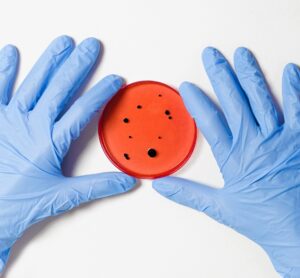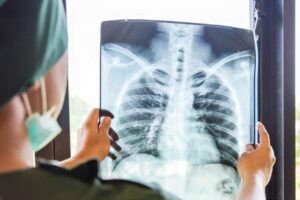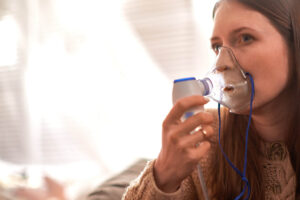Traveling with a lung condition can be daunting. Even a smooth journey to your destination can leave you exhausted and worn out. The information here will hopefully help you prepare, anticipate issues and concentrate on having a great trip.
Air travel
Flight distances are increasing all the time. Aircraft can cover more than 5000 kilometers and fly for up to 14 hours without stopping. The air inside the cabin is pressurised because there is not enough oxygen to breathe at 35,000 feet in the air. Pressurizing the cabin means adding more oxygen molecules to the cabin space. However, the cabin is not the same as breathing air at ground level. Airlines by law have to pressurize the cabin to at least 8000 feet – which means it is the same as you sitting and breathing up a mountain. The higher up you go, the ‘thinner’ the air (fewer oxygen molecules). The oxygen in your blood will start to fall at around 3300 feet. For a person with healthy lungs this isn’t a big deal. But depending on how fit your lungs are, you may experience symptoms on a longer flight.
For a person without lung disease, measuring pulse oximetry (oxygen finger sensor) will be 98-100% on the ground and 94-96% at altitude. Your body’s response to this compares to exercise response. Subconsciously your heart beats a little stronger and faster and you breathe faster to ensure oxygen-rich blood reaches all vital organs. The air humidity in the cabin is 10-20% and the temperature is often low. These factors can contribute to drying and irritation of the airways leading some people to cough. Other common symptoms on flights include breathlessness, lightheadedness, chest pain, palpitations and tingling in the hands and feet.
Who should get an evaluation before flying?
There is no definitive criteria so if you live with bronchiectasis or COPD and plan to undertake a long haul flight it is worth asking your doctor if it is safe. Doctors will typically look at the following to make a determination: (i) your oxygen level at rest (and whether you need oxygen already), (ii) your oxygen levels when you walk, (iii) your lung function test results, (iv) any coexisting heart conditions.
Oxygen supplementation
If you do not have oxygen and require it on the aircraft, check with your airline. They usually will need a form completed by a physician and the airline will provide the oxygen cylinder on the flight. If you are on long term oxygen therapy at home, check with the airline if you can bring your own cylinders or whether they will provide them. For longer haul flights a portable oxygen concentrator will be more convenient and these can be rented if you do not own one. Typically your doctor will advise you to double the oxygen flow rate on the flight if you are on continuous oxygen already. Studies have shown there no difference in your blood oxygen level between continuous and pulsed oxygen flow on flights.
Pre-travel
- check with your doctor if you need a formal flight evaluation
- speak to the airline early if you need oxygen
- try to book direct flights
- consider getting a frequent travelers medical card (FREMEC)
- Keep all medical equipment in cabin baggage
- Check your travel insurance in case you need to access medical services abroad
Tips during the flight
- keep medications on board at easy reach
- stay hydrated with bottled water
- try to get a seat closer to the toilets
- do intermittent leg exercises
- avoid alcohol and sedatives which can lower your oxygen levels
- Wash hands frequently
- Aim the air vent slightly in front of your face to blow germs away from your face
- Wear a mask
- Wipe down the tray table, screen and armrests with disinfectant wipes
- Avoid touching your eyes, nose or mouth
- Minimize touching surfaces in the toilet (or wear disposable gloves)
Traveling with cystic fibrosis
Living with cystic fibrosis should not hold you back from traveling. It is important to plan ahead and have all your ducks in a row if any problems do arise.
Before travel…
- Discuss your plans with your provider
Before you book anything speak to your CF provider and discuss your plans. Depending on your health you may require oxygen therapy if you are flying (see above). If the world is your oyster, choose your destination carefully. Ideally you want to go someone which has comprehensive cystic fibrosis care so if you plan to go abroad look at Cystic Fibrosis Worldwide (link) for more information. Within the US there are 130 CF care centers (link) where high level CF care is delivered.
- Carry documentation of your health issues
It is worth obtaining a summary signed by your doctor which includes name, date of birth, your physician’s contact details, the status of your cystic fibrosis including lung function, associated diagnoses, medication allergies, list of medications with doses and frequencies and equipment you are carrying for for CF (nebulizer and accessories, vest, flutter valve, insulin needles, pumps, glucometer etc). If are flying internationally, you may need this for a customs certificate to justify why you are travelling with a large supply of medical equipment and medicines.
- Plan your medicines
Speak with your pharmacy to ensure you have enough (and extra) medications for the duration of your trip. Keep in mind that some medications in the US will not be available abroad and plan accordingly. If you have medications that require to be kept cool, check you have a refrigerator at your destination. For long journeys, think about using an insulated lunch bag with small ice packs.
- Plan your equipment
Bring everything you will need for taking your medications and doing airway clearance. Check with the manufacturer if it will work outside the US if it needs to be plugged in. Always hand carry your equipment to avoid damage when checking it in. Medical equipment does not count towards your cabin luggage allowance so take everything you need. Even a couple of days off your usual routine may impact your health and enjoyment. And remember to take a plug adapter!
Keeping the germs at bay
As you probably know germs are everywhere (bacteria, viruses, fungus). Try to maintain your routine as much as possible. Wash your hands with soap and water where possible, use alcohol hand sanitizer (with at least 60% alcohol content) if you are on the go. Avoid air dryers in public restrooms.
Travel tips:
Be flexible – you may be doing treatments out of your holiday accommodation
Pack it all – take everything you might need. There are no prizes for packing light
Use the airline special services – don’t tire yourself out before you even get there
Plan a manageable itinerary









